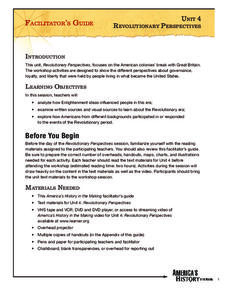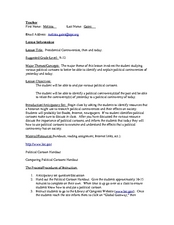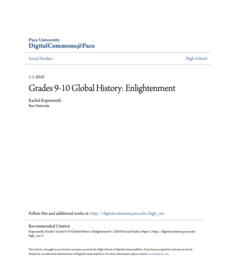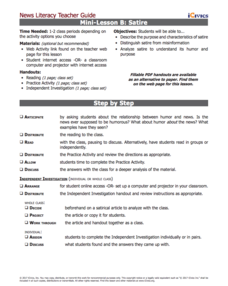Annenberg Foundation
Revolutionary Perspectives
Life, liberty, and the pursuit of happiness. Learners go to the heart of the causes of the American Revolution. Examining political cartoons, Enlightenment documents, and firsthand accounts, they present their ideas and reflective...
Carolina K-12
African Americans and the Vietnam War
No need to look any further. This resource has everything for a solid exploration of the role of African Americans in the Vietnam War. Class members read primary sources, including a Martin Luther King speech, political cartoons of the...
Curated OER
Constitution Cartoons
Young scholars view series of cartoon overheads that explain Constitution, name branches of government and their powers, define federalism and separation of powers, examine rights and obligations of citizens, and discuss significance of...
Curated OER
Presidential Controversies: Then and Today
Students explore presidential controversies. In this political cartoons lesson, students locate political cartoons that reflect presidential controversies. Students then respond to analytical questions pertaining to the cartoons they...
Curated OER
Native American Stereotypes
Eleventh graders examine Native American stereotypes. In this Native American history lesson, 11th graders complete an activity about generalizations as they analyze the provided political cartoons regarding the portrayal of Native...
Curated OER
McCarthysim
Eleventh graders explore and analyze the impact of the Cold War at home and how the fear of communism and nuclear war affected American life throughout the Cold War. They study what role Senator Joseph McCarthy played on American fears...
Curated OER
Franklin Delano Roosevelt's Disability: Was He Successful in Concealing It?
Students examine how President Franklin Roosevelt kept his disability out the public eye. In this presidential history lesson, students analyze political cartoons and information from the Roosevelt Library to determine whether or not...
Curated OER
Abraham Lincoln: Our Man for All Seasons
Students analyze perceptions of slavery during the Civil War era. In this Abraham Lincoln lesson, students research Internet and print sources regarding Lincoln's view of slavery. Students also compare pro- and anti-slavery political...
Pace University
Global History: Enlightenment
The core ideas of the Enlightenment—reason, knowledge, and freedom—represented a rebellion against the despotic control of absolute monarchs. As part of the study of the movement, class members assume the voice or either a monarch or an...
Curated OER
Creating Civic Awareness Through Artistic and Literary Forms
Interpret current events using editorial cartoons and other print media. Middle schoolers explore the meanings of literary and artistic terms such as satire, irony, and caricature. They visit internet sites to develop an understanding of...
Digital Public Library of America
Ida B. Wells and Anti-Lynching Activism
A packet of 13 primary sources provides young historians with insight into the anti-lynching activism of civil rights Ida B. Wells. Included are images of Wells, her letters, a political cartoon, newspaper lynching announcements, and a...
Digital Public Library of America
A Raisin in the Sun by Lorraine Hansberry
A set of 14 primary sources provides background for a study of Lorraine Hansberry's drama, A Raisin in the Sun. Featured are images from stage productions of the play, white supremacy protests, a clip from a television interview, and...
PBS
Library of Congress: Media Gallery | Women's Suffrage
Designed to support a study of women's suffrage in the United States, a primary source document set from the Library of Congress includes images, song sheets, articles, statistical documents, political cartoon, and audio recordings...
Center for History Education
Continuity or Change? African Americans in World War II
While World War II was a pivotal moment in history, historians debate its importance to the civil rights movement. Class members consider the implications of segregation and the war using a series of documents and a jigsaw activity....
Smithsonian Institution
A New America: The Hart-Celler Immigration Act of 1965
Many dream of coming to America, but few may enter. The instructional activity explores the Hart-Celler Immigration Act of 1965 and how it changed immigration policies in the United States. Academics learn how immigration quotas impacted...
Curated OER
Images of Secession
Analyze political cartoons and historical events. Middle schoolers utilize primary resources to increase their comprehension of the topic of secession. They utilize graphic organizers to take notes, compare, and analyze political...
Curated OER
Causes of the American Revolution
Challenge your fifth graders with this lesson. They read about the American Revolution, discuss key terms, and engage in a variety of activities. First, they create a timeline, then they answer an online quiz, and finish by making a...
Curated OER
Corporate Governance
Examine the role of the Securities Exchange Commission. Upper graders watch a short Bill Moyers video, analyze a political cartoon, complete a graphic organizer on the SEC, and develop SEC reform strategies to rebuild investor confidence.
iCivics
Mini-Lesson B: Satire
Hey, what's so funny? Explore the use of satire in a variety of media with a hands-on instructional activity. Fourth in a five-part journalism series from iCivics, the activity introduces satirical language in print and online. Pupils...
Facing History and Ourselves
The Impact of Identity
How does identity influence the way people respond to events? That is the central question class members grapple with as they examine a political cartoon, read a vignette by Sandra Cisneros, watch of video of police officers discussing...
Curated OER
Rebels Or Resisters?
Middle schoolers participate in a mock trial on the Whiskey Rebellion that took place in the state of Pennsylvania in 1794. They analyze the perspectives presented by both sides to determine whether the Whiskey "rebels" were guilty of...
Curated OER
Political Cartoons: Thinking Broadly, Communicating Succinctly
High schoolers think broadly about the tsunami disaster and its aftermath through studying cartoons. Students critically think about the literary devices the authors/artists use, such as satire, metaphor and personification.
Center for History Education
To What Extent Were Women's Contributions to World War II Industries Valued?
Women rose to the challenge when the nation's war effort called them—but were sent home when the GIs came back from World War II. Young historians consider whether the United States valued women's contributions during the war using a...
Curated OER
Bioterrorism
Students research bioterrorism and then create two political cartoons, one that shows the viewpoint that bioterrorism is not a threat and one that shows the viewpoint that it is.

























